Understanding Weather for Kiteboarding in Panama City Beach
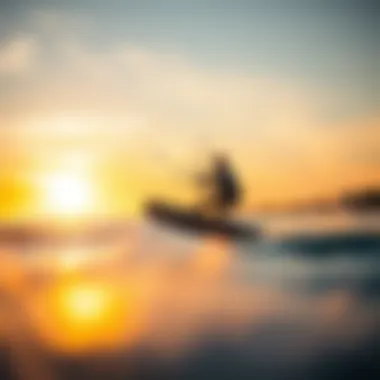
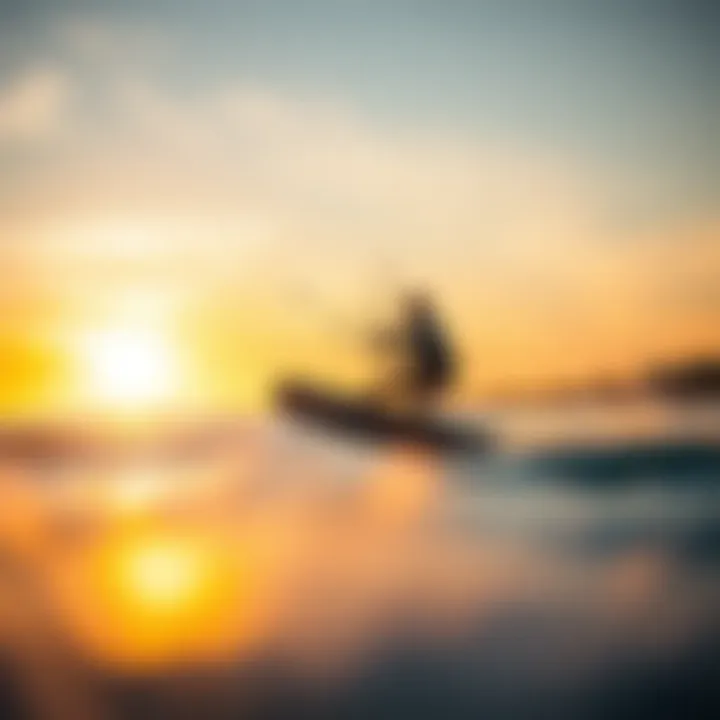
Intro
Panama City Beach is more than just a sun-soaked getaway; it’s a hotspot for kiteboarding enthusiasts. Understanding the local weather patterns can make or break your experience on the water. The interplay of wind, temperature, and seasonal shifts lays the groundwork for those thrilling rides or, at times, a rather calm day on the beach.
With diversions like constant breezes and shifting tides, this beautiful location offers a unique climate that can excite both beginners and seasoned kiteboarders. As you tune in here, you’ll grasp vital insights into the conditions that can lead to those exhilarating rides and the perfect kiteboarding adventures that Panama City Beach has to offer.
Gear and Equipment
When preparing to hit the waves in Panama City Beach, the right gear is crucial. Whether you're just dipping your toes into the kiteboarding scene or you're a long-time pro, understanding the essential equipment is pivotal.
Essential Kiteboarding Gear for Beginners
Starting out, it’s important to have gear that is both reliable and easy to use. Here’s a rundown of what beginners should consider:
- Kite: A beginner-friendly kite that offers stability is ideal; look for sizes around 8 to 12 meters for most days on the water. North Kiteboarding and Cabrinha offer great options.
- Control Bar: This is your lifeline. Make sure it’s easy to grip but also has safety features you can trust.
- Harness: A comfortable harness distributes the kite’s pull across your body and helps you maintain control. Seat harnesses are often best for newbies.
- Board: Opt for a larger board that's more forgiving—this can help if you fall more often than not!
- Safety Gear: Don’t skip out on a good helmet and impact vest, especially when you're just learning.
Advanced Equipment for Experienced Riders
For those who have already gathered some sand in their gears, an upgrade might make sense. Here’s what experienced riders often turn to:
- Lighter and more dynamic kites: Look for brands like F-one or Slingshot for kites designed for freestyle or big air.
- Custom Boards: Many experienced kiteboarders opt for custom boards tailored to their riding style, whether it be freestyle, wave riding, or racing.
- Performance Harness: As skills grow, the right harness can make all the difference. This includes features like back support and spreader bars.
Techniques and Tips
Equipping yourself with the right gear only goes so far; knowing how to use it effectively elevates the entire experience of kiteboarding in Panama City Beach.
Basic Riding Techniques for Newbies
For those just starting out, mastery will come with practice and dedication. Here are some fundamental riding techniques:
- Body Dragging: Learning how to maneuver without a board helps you gain confidence in controlling the kite.
- Upwind Riding: Understanding how to ride upwind is essential for getting back to where you launched.
- Transitions: Learn how to switch directions smoothly; this is crucial for making the most of the conditions on the water.
Expert Tricks to Elevate Your Skills
Once you've got the basics down, it's time to expand your skill set:
- Jumping: Timing with kite control and board pop is key. Practice timing your pull with your board's switch.
- Handle Passes: A trick usually conquered by seasoned riders. This requires good kite positioning and strong core control.
- Wave Riding: Utilize the natural waves in Panama City Beach. Knowing how to read the waves can make a huge difference in your overall experience.
Understanding the local weather nuances and employing the right gear and techniques will provide kiteboarders a fulfilling experience on these picturesque waters. Never forget, the real thrill lies at the intersection of preparation and opportunity in this stunning locale.
Overview of Panama City Beach Weather
Understanding the local weather in Panama City Beach is vital for kiteboarding enthusiasts who are eager to maximize their time on the water. Knowledge of specific weather patterns can significantly influence not only the safety of kiteboarders but also their experience overall. This guide will delve into critical elements such as temperature variations, wind dynamics, and local climatic conditions, all of which are key to enjoying kiteboarding in this stunning locale.
Geographical Influence on Weather Patterns
Panama City Beach is framed by the Gulf of Mexico, which plays a considerable role in shaping its weather. The warm waters of the Gulf have a moderating effect on the climate, typically resulting in milder winters and hot, humid summers. The near-coastal position means that prevailing winds often blow from the sea, providing ideal conditions for kiteboarding.
Moreover, the topography surrounding Panama City Beach nuances weather patterns. Low-lying areas can experience different temperature and humidity levels compared to elevated terrains nearby. This geographical diversity creates pockets of unique weather experiences, including localized wind conditions that fluctuate even within short distances.
When navigating this area, kiteboarders may find that their anticipated optimal wind direction changes based on the geographical features they encounter. Thus, understanding these patterns not only enhances their kiteboarding skills but also keeps them adept at reading the environment.
Microclimates within Panama City Beach
Within the stretch of Panama City Beach lies a tapestry of microclimates, each influenced by the surrounding environment, vegetation, and proximity to water. For kiteboarding, these microclimates can lead to varying conditions that might be favorable or unfavorable, depending on the specifics of the day.
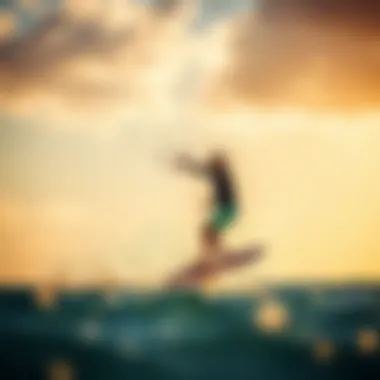
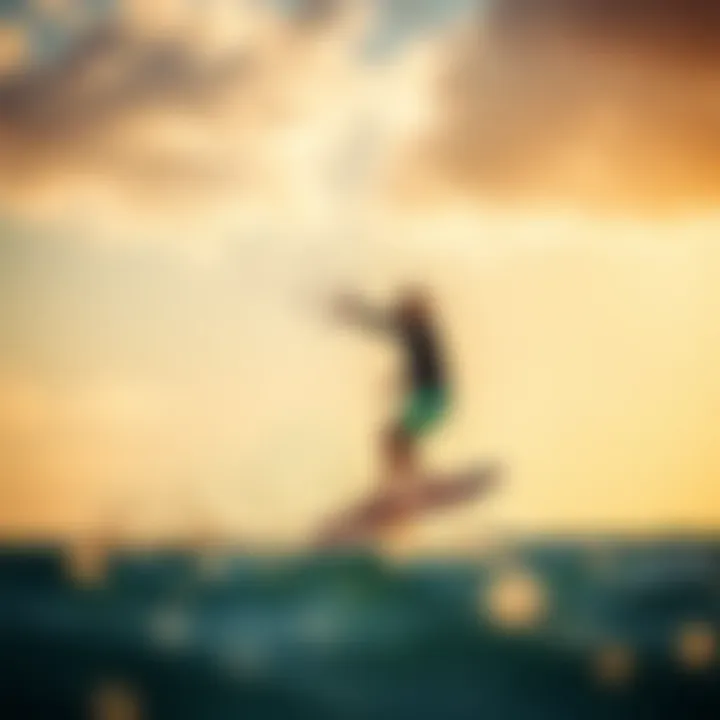
For example, areas sheltered by dunes may experience lighter winds, making them less suitable for advanced kiteboarders looking for more robust conditions. Conversely, locations closer to open stretches of water often yield stronger winds, ideal for those seeking exhilarating rides. It is not uncommon for kiteboarders to stray just a few hundred yards and experience markedly different wind levels and temperatures.
Exploring these microclimates grants kiteboarders insights into where to launch and land safely. Familiarizing oneself with these micro-spaces—like the difference between sandy shorelines and densely vegetated spots—can refine a kiteboarder’s judgment and improve their performance on the water.
"Embracing the unique geographical and microclimatic influences in Panama City Beach enriches the kiteboarding adventure, elevating both skill and enjoyment."
In summary, navigating the local weather requires a keen understanding of the geographical factors at play and the specific microclimates that affect kiteboarding in Panama City Beach. With the right knowledge, kiteboarders can make informed decisions that enhance their time on the water.
Temperature Ranges Throughout the Year
Understanding the temperature variations throughout the year in Panama City Beach is crucial for kiteboarding enthusiasts. These fluctuations influence not only the optimal times for kiteboarding but also impact safety and overall enjoyment on the water. Each season brings its own set of characteristics, helping you plan your kiteboarding sessions effectively and ensuring the best experience possible.
Winter Temperatures and Conditions
During winter, temperatures in Panama City Beach typically hover between 50°F to 65°F. While this might sound rather chilly compared to the balmy summer months, it can still be quite accommodating for kiteboarders. The winds during winter are often steadier and less turbulent, making it an excellent time for those looking to improve their skills without the distractions of intense heat.
However, kiteboarders should not take the sea conditions lightly. Even though the temperatures are milder, factors like cold snaps or unexpected weather shifts can occur. Being prepared with appropriate gear, such as a wetsuit, is key for maintaining comfort on the water.
Spring Warming Trends
Spring is like a breath of fresh air for kiteboarding aficionados. From March through May, temperatures can rise dramatically, reaching anywhere from 60°F to the low 80s°F. The warming trend during this period creates a delightful atmosphere for outdoor activities.
What's more engaging is how the winds pick up during spring. The typical east-southeast breeze acts like a curtain call, ushering in kiteboarding season with a crescendo of steady wind patterns. Enthusiasts find the conditions ideal not just for beginners brushing up on techniques but also for veterans aiming to showcase their skills. Remember, this is the season where local competitions might begin, adding an extra thrill to your kiteboarding experience.
Summer Heat and Humidity Levels
Summer in Panama City Beach can be described in one word: sticky. With temperatures soaring to the mid-90s and humidity levels not far behind, kiteboarding during this season requires proper planning. The summer months can present unique challenges, with thermals making the wind sporadic.
While mornings may offer some consistent winds, the afternoons can turn into a fight against the sweltering heat. Staying hydrated is essential. Often kiteboarders will hit the water early in the day or later in the evening when the breeze kicks up. It’s also the time when you’re likely to encounter more fellow enthusiasts, sharing the waves and making every ride an exhilarating adventure!
Fall Temperatures and Transitioning Weather
As summer bids adieu and the leaves hint at changing colors, temperatures begin to cool to the mid-70s to low 80s F during fall. This period can be seen as a hidden gem for kiteboarders. The winds tend to stabilize after the turbulent summer, offering a smoother ride.
Moreover, fall can bring in some of the year’s best wind conditions, making it the perfect time for seasoned riders to test their limits. However, one must stay alert as hurricane season can extend into parts of fall, meaning occasional rain squalls and choppy waters may interrupt ideal kiteboarding moments. Keeping an eye on weather forecasts becomes increasingly important as the summer heat fades into refreshing breezes.
"Understanding local temperature patterns isn't just about comfort; it’s about mastering the craft of kiteboarding in Panama City Beach."
In summary, each season presents its unique opportunities for kiteboarders. Recognizing and adapting to these temperature ranges allows one to harness the elements effectively, ensuring a cohesive and thrilling experience on the water.
Wind Patterns Impacting Kiteboarding
Wind patterns are the lifeblood of kiteboarding. For enthusiasts, the right wind not only enhances performance but also contributes significantly to the safety and enjoyment of the sport. When it comes to playing on the waters in Panama City Beach, understanding these wind currents can make or break a day on the water. Efficient kiteboarding hinges on the knowledge of prevailing winds, seasonal variations, and ideal conditions that favor quality time gliding through the waves.
Prevailing Wind Directions
The prevailing wind directions around Panama City Beach are pivotal for kiteboarders. Typically, winds come from an easterly to southeasterly direction, especially during spring and summer months. This wind flow creates a favorable setup for kiteboarding. When gliding on the water, kiteboarders benefit from consistent crossshore winds which minimize the risk of being blown away from the shore.
However, it’s essential to keep an eye on local weather forecasts. The changing of seasons may prompt variations in wind direction. For example, during fall, northwesterly winds may take precedence, which might not be as suitable for kiteboarding. Knowing when and how these winds shift provides a solid edge for riders looking to catch the best breezes.
Wind Speed Trends by Season
Knowing the wind speed throughout the seasons is key for kiteboarders planning their outings. Panama City Beach experiences a range of wind speeds with variations:
- Winter: Winds tend to slow down, averaging 10 to 15 mph, making it ideal for beginners wanting a more manageable experience.
- Spring: As temperatures rise, so do winds, averaging between 15-20 mph. This is the season when many kiteboarders flock to the beach, as optimal conditions present themselves.
- Summer: Expect strong winds, frequently reaching speeds of 20-25 mph. While this can be exhilarating for experienced riders, it may be challenging for novices.
- Fall: Wind speeds start to decrease, posing conditions similar to winter that may last into late fall. It's a time when both beginners and pros can enjoy more relaxed sessions.
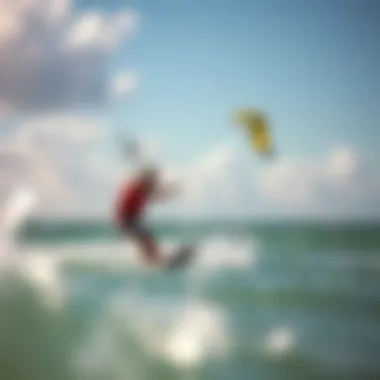
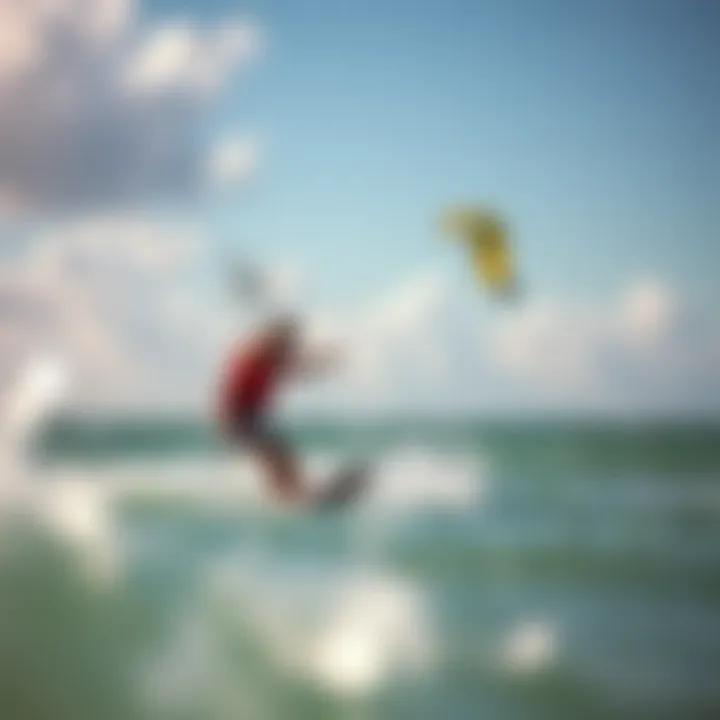
Optimal Wind Conditions for Kiteboarding
For kiteboarding, the sweet spot lies between 10 to 25 mph winds. Within this range, riders can maximize their enjoyment without compromising safety. The ideal conditions often accompany clear skies and minimal obstacles in the water. High winds can be thrilling but also precarious; they can lead to greater risks of crashes and accidents.
Understanding and evaluating wind conditions can significantly enhance the kiteboarding experience. Always assess the local weather updates comprehensively before heading out.
Moreover, wind consistency is just as important as speed. Steady, uninterrupted breezes rather than gusty winds are preferable. It allows kiteboarders to maintain their momentum and perform tricks with greater ease.
Rainfall and Its Effects
When it comes to kiteboarding in Panama City Beach, understanding rainfall can’t be sidelined. It plays a crucial role in determining the overall weather conditions, which greatly influence your kiteboarding experience. Aside from simply drenching the sand, rain can impact wind patterns, water temperature, and even the safety of your session. Thus, for kiteboarders—whether novice or seasoned—having a keen awareness of rainfall patterns can make the difference between an exhilarating day on the water and a regrettable outing.
Annual Rainfall Patterns
Panama City Beach experiences a subtropical climate characterized by pronounced wet and dry periods. Rainfall generally occurs throughout the year, but here’s what’s particular:
- Monthly Averages:
- Seasonal Distribution: Rainfall is more frequent in the summer, as the warm air holds more moisture, leading to afternoon thunderstorms. Keep your eyes peeled for dark clouds rolling in, as they can change your kiteboarding plans in a heartbeat.
- Rainfall Amounts: On average, the area can receive around 65 inches (165 cm) of rain per year. However, rainfall can be sporadic; one minute it’s sunny, the next you’re watching raindrops race down your windshield.
- May to October sees the most rainfall. The summer months can bring heavy downpours due to thunderstorms, with July typically being the wettest month.
- November to April yields significantly less precipitation, which is often ideal for outdoor activities.
Understanding these patterns can help kiteboarders anticipate conditions and adjust their plans accordingly. After all, nobody wants to be caught in a downpour while trying to catch that perfect wind.
Impact of Rain on Kiteboarding Safety
The effects of rainfall extend beyond the immediate soaking. Rain can contribute to various safety considerations hills every kiteboarder should keep in mind:
- Reduced Visibility: Rain can obscure your vision, making it hard to spot other kiteboarders and potential hazards in the water. This lack of clarity can really up the ante in terms of risk.
- Water Quality Issues: After heavy rains, runoff can lead to pollutants entering the water. It’s advisable to steer clear of the water for a day after a heavy downpour, especially if there’s any visible debris.
- Equipment Concerns: Rain can corrode equipment faster than you think. Dropping a kite in the saltwater post-rain can ruin your gear over time. A little maintenance can save you big bucks down the line.
- Wind Variability: Rain often brings shifts in winds, which can create unexpected gusts. A fresh breeze can quickly turn into a tricky gust, giving even the most skilled kiteboarders a run for their money.
Remember, the thrill of kiteboarding comes paired with responsibilities. Stay informed and make safety your priority, even on those grey, rainy days.
Tropical Storms and Hurricanes
The weather is a fickle friend, and for kiteboarders in Panama City Beach, understanding tropical storms and hurricanes is absolutely crucial. These powerful weather systems can turn a calm day at the beach into chaos faster than you can say ‘kite down.’ Knowing how tropical systems affect local conditions allows kiteboarders to not just survive but thrive during the windy spells that follow. This section dives into the hurricane season, preparation strategies, and post-storm conditions that every kiteboarder should keep on their radar.
Hurricane Season Overview
Hurricane season in the Gulf of Mexico typically runs from June 1 to November 30. This period peaks around mid-August to late October. The warm waters of the Gulf create an ideal environment for these storms. When wind patterns shift and atmospheric conditions align, a harmless breeze can quickly morph into something much more threatening.
- Early Detection: The advancement of meteorological technology has made it easier to predict storm tracks. Websites like NOAA (www.noaa.gov) can provide timely updates.
- Local Notices: Pay attention to local news and weather forecasts. Accurate forecasts can help gauge the severity of a storm and its potential impact.
Kiteboarders should keep these dates in mind, especially since heavy winds and rains can continue to affect conditions even after the storm has passed.
Preparation Strategies for Kiteboarders
Preparation is half the battle. For kiteboarders wanting to dodge the bullet, here are strategies to ensure safety and readiness:
- Stay Informed: Download reliable weather apps like Windy or Storm Radar. These tools give real-time updates and alerts.
- Gear Safety: Secure your kiteboarding equipment. Wind can whip up suddenly, so keeping gear indoors or secured can prevent damage.
- Evacuation Plans: Understand your community’s evacuation routes. In cases of extreme weather, knowing where to go is paramount.
- Emergency Kit: Have a kit ready that includes essentials like water, non-perishable food, first aid supplies, flashlights, and batteries. You never know when you're going to need it.
Preparation can make all the difference between a disastrous experience and a relatively smooth ride through turbulent weather.
Post-Storm Conditions
After a storm passes, the environment changes drastically. For kiteboarders, understanding what to expect is essential:
- New Water Conditions: After a storm, the water may be choppy with debris. It’s wise to scout the area before heading out. Look for clean breaks and safe zones.
- Wind Shifts: Storms can change typical wind patterns, causing unexpected gusts or lulls. Even seasoned kiteboarders should approach with caution.
- Wildlife Awareness: Post-storm, wildlife may react unpredictably. Watch for fish schools, or even larger creatures, which may be more visible near the shoreline.
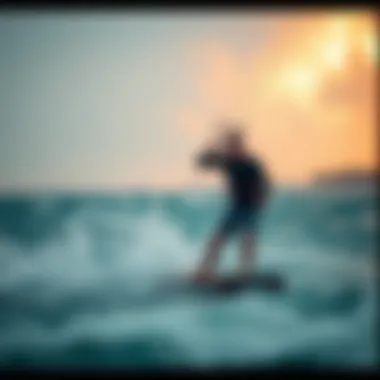
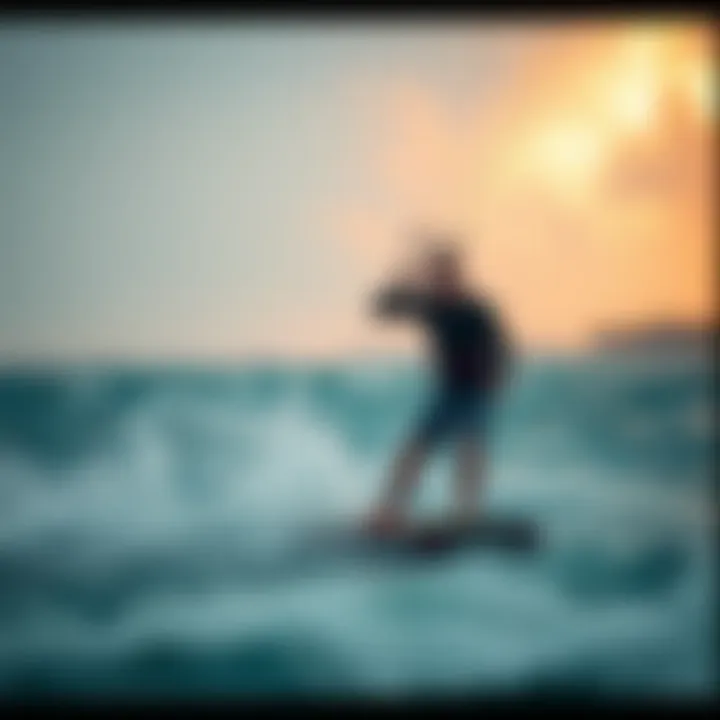
"Mother Nature has her own rhythm; respect it, and you'll find the best waves. Ignoring it, however, often leads to a rough ride."
In sum, being aware of tropical storms and hurricanes significantly impacts the kiteboarding experience. Being prepared is not merely a suggestion but a necessity for enjoying the stunning waters of Panama City Beach safely.
Local Weather Resources for Kiteboarders
Kiteboarding at Panama City Beach isn’t just about having the right equipment or skills. Understanding the local weather dynamics can make a significant difference in a kiteboarder’s experience. Local weather resources provide vital information regarding wind patterns, temperature fluctuations, and potential hazards. With accurate data at their fingertips, kiteboarders can make informed decisions, which not only enhances safety but also maximizes their time on the water.
Websites and Apps for Weather Tracking
Several websites and mobile applications specialize in weather tracking, specifically tailored for outdoor activities like kiteboarding. Here are some key resources that kiteboarders should consider:
- Windy: This platform offers detailed forecasts for wind speed and direction, complete with animated maps. Users can easily visualize how conditions will change throughout the day.
- iKitesurf: A well-known site among kiteboarders, it provides precise wind data, tidal charts, and even community-driven reports of local conditions.
- Weather Underground: This site gives access to hyper-localized forecasts with radar maps. Users can delve deep into current weather conditions at specific locations.
- KiteMap: It’s not purely for weather, but KiteMap allows locals to share their favorite kiteboarding spots along with any pertinent weather details.
By combining different sources, kiteboarders can get a comprehensive view of the changing weather, enabling them to hit the water when conditions are just right.
Local Meteorological Services
For kiteboarders, local meteorological services offer dependable weather information that can be critical, especially for those planning a day on the water. The services include:
- National Weather Service (NWS): The NWS provides official forecasts and warnings for hurricanes, thunderstorms, and other weather phenomena. It’s crucial for staying safe.
- Florida’s State Meteorologist: This service focuses on state-specific information and insights into unusual weather patterns that might affect kiteboarding.
"The best preparation starts with understanding local forecasts, which keeps kiteboarders ahead of the weather curve."
Staying in touch with local radar updates will not only help ensure that kiteboarders are aware of any rapidly changing conditions but can also provide insight into long-range forecasts to help plan future trips. Overall, utilizing these weather resources can immensely amplify a kiteboarder’s time on the water, enhancing both performance and safety.
Environmental Considerations
Understanding the environmental factors at play is key for kiteboarders in Panama City Beach. This section focuses on two main elements: water temperatures and safety, and the interaction with local wildlife. Grasping these concepts not only enhances the kiteboarding experience but also ensures the safety and well-being of all participants.
Water Temperatures and Safety
When it comes to water sports, the temperature of the water directly influences comfort and safety levels. In Panama City Beach, water temperatures can fluctuate significantly throughout the year. During the warmer months, from late spring to early autumn, the water temperature generally hovers around a delightful 80-85°F (27-29°C). This makes for ideal conditions, as the warm water is not just pleasant for a long day out, but also encourages a vibrant marine ecosystem.
However, don’t let these inviting temperatures lull you into complacency. In the cooler winter months, the temperatures can drop, sometimes dipping to around 60°F (15°C). Kiteboarders should consider wearing a wetsuit during these colder months to stave off the chill, enhancing their ability to stay in the water longer without discomfort.
A key safety consideration is the risk of hypothermia, which can occur even when water temperatures seem relatively warm. It's important that kiteboarders pay attention to their own body heat and dress appropriately.
"Stay warm, stay safe! Kiteboarding in cooler temps requires the right gear to enjoy the exhilarating ride without risking your health."
Potential Wildlife Interaction
Kiteboarding brings you in close contact with some unique wildlife. The coastal waters around Panama City Beach are home to an array of species. This includes playful dolphins, elegant stingrays, and, unfortunately, jellyfish. While it’s rare to encounter dangerous species, a little awareness goes a long way in ensuring a positive experience.
- Dolphins: These intelligent creatures are often seen riding the waves and can sometimes approach kiteboarders. Respect their space and enjoy watching them from a distance.
- Stingrays: When wading or walking in shallow waters, careful foot placement is crucial. Shuffle your feet to avoid inadvertently stepping on one; this simple action can dispatch a warning to these creatures, allowing them to flee.
- Jellyfish: Stings can happen unexpectedly. Familiarizing yourself with local jellyfish species can help reduce the risk. If stung, seek medical help if symptoms worsen.
Awareness isn’t just about avoiding hazards; it also enriches the kiteboarding experience. Consider taking a moment to appreciate the natural beauty around you. After all, being out on the water isn’t just about catching wind and waves; it’s about connecting with the vibrant ecosystem that flourishes in Panama City Beach.
Concluding Thoughts on Weather and Kiteboarding
When it comes to kiteboarding in Panama City Beach, the significance of understanding local weather patterns cannot be stressed enough. Weather plays a crucial role in ensuring safety, enhancing performance, and making the most of your time on the water. For kiteboarding enthusiasts, awareness of the climate can turn a regular day into an exhilarating adventure or, conversely, a dangerous outing.
The Importance of Local Knowledge
Diving into the specifics, having local knowledge about the weather not only augments your kiteboarding experience but also contributes to your overall safety. Here are a few significant elements to consider:
- Wind Patterns: Knowing how the wind behaves in different seasons allows you to select the best times to hit the water. For instance, spring and fall months often bring substantial winds ideal for kiteboarding.
- Temperature Variations: Understanding the temperature range across seasons will help you dress appropriately. The weather can turn unexpectedly, so being informed helps in avoiding chills or overheating.
- Effect of Rain: Rain doesn�’t just dampen your day; it can also impact visibility and water conditions. Knowing when to expect rain showers will save you from unplanned returns to shore.
- Hurricane Awareness: Preparing for tropical storms is paramount. It’s essential to know the signs of approaching storms and have a plan in place for when conditions deteriorate.
"There’s an old saying: 'Forewarned is forearmed.' This holds particularly true for kiteboarders who thrive on the winds and waters of Panama City Beach."
For further insight into weather considerations, you may explore resources like NOAA or National Hurricane Center, where you can get updates and alerts specific to the region.















